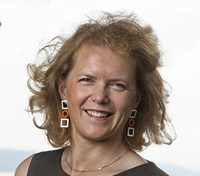 The change is coming, but it comes slowly – this is my summary of this year’s EVPA annual conference, the European conference on social investments. ‘You are small and insignificant’ – that is how the chairman of a large Swiss pension fund welcomed the conference attendees. But are we small? Yes, compared to the traditional investor market. However, we are many and we are critical to many people’s lives – and we’re growing!
The change is coming, but it comes slowly – this is my summary of this year’s EVPA annual conference, the European conference on social investments. ‘You are small and insignificant’ – that is how the chairman of a large Swiss pension fund welcomed the conference attendees. But are we small? Yes, compared to the traditional investor market. However, we are many and we are critical to many people’s lives – and we’re growing!
This was the largest conference in EVPA’s history, with 520 participants and a full conference hall in Geneva. The assembly included social entrepreneurs, students and academics, but most attendees were social investors in many shapes: large and small foundations and funds, established by commercial companies or family fortunes and operated by investors with backgrounds in venture companies or philanthropic activity (read: rich people who give of their wealth to a good cause).
They invest in Africa, Asia, their domestic market or wherever they find the right projects. Their strategies are numerous. Some require the investment to be profitable, some, such as Ferd Social Entrepreneurs, just want the investee to be profitable but are not expecting a financial return back from their investment. You find some traditional social funders who look only at social performance, but more and more investors use the term ‘social first’, which indicates that they also require some financial return on their investment. The discussion at the EVPA conference was deeply engaged in the question whether the social goal is consistent with the financial, and if they build each other up or simply destroy traditional philanthropy.
There continues to be a growing interest in developing this sector as a distinct financial asset class to attract the big money, the commercial funds and investors, not least because the social sector needs a lot more of the new solutions and non-governmental efforts. The large national pension funds were identified as key trendsetters, but most are still purely commercial. This is really too bad. Just reflect on this: if only the Norwegian Pension Fund could find the courage and put 1 per cent of its funds into this new market … this would be noticed! And it would create social results. How can we convince pension funds and other investors about the value of investing in these kinds of projects? They give good returns, but over a somewhat longer time and with a social return in addition to the financial which needs to be measured in new ways.
The mix of actors and their different strategies characterize both the EVPA conference and the area of social investment. The conference showed how much we have evolved in recent years. This year we spent liberatingly little time discussing definitions and the boundary between ‘venture philanthropy’, ‘philanthropy’ and ‘impact investing’. This year’s theme was ‘Responsible leadership: Inspire and Act!’ and we got to meet many players with one common denominator: the desire to change the situation of vulnerable people around the world – both in developing countries and in their own countries. Entrepreneurship and innovation were high on the agenda, but the majority still invest in well-established organizations and companies with social objectives (social businesses).
With so many numbers and strategies, we, as investors, risk losing touch with who we are really targeting: those who need the extra social effort. However, heart and soul entered the room when the Fondazione Vertical from Chile, represented by their president, Rodrigo Jordan, entered the podium. Social entrepreneur and mountaineer Rodrigo gave us a good dose of his fierce commitment to fighting poverty – not to be kind, as he put it, but because of the ridiculously huge loss of talent, innovation, creativity and entrepreneurship that poverty inflicts on us.
 He then presented a remarkable example of how extreme poverty actually has created creativity and entrepreneurship: the Landfill Orchestra and their beautiful music on instruments made from rubbish. He managed to show us why the work we do is so important. Why we constantly need to improve our strategies and investments tools. They are essential to help those who have good solutions for those who deserve to have a chance.
He then presented a remarkable example of how extreme poverty actually has created creativity and entrepreneurship: the Landfill Orchestra and their beautiful music on instruments made from rubbish. He managed to show us why the work we do is so important. Why we constantly need to improve our strategies and investments tools. They are essential to help those who have good solutions for those who deserve to have a chance.
And the most important part is not giving up hope. Rodrigo shared an expression he learned in Haiti where they worked after the devastating earthquake and met suffering people who never gave up: ‘Behind the mountain there is always another mountain.’
Watch and be inspired by these movies from the Landfill Orchestra.
Katinka Greve Leiner is director of Ferd Social Entrepreneurs.






Comments (0)